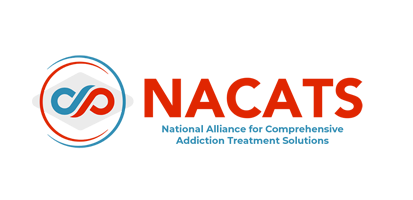
Table of Contents
Suboxone® Withdrawal: How Do I Cope?
Medication-assisted treatment (MAT) is the use of medications, along with counseling and behavioral therapies, to provide a “whole-patient” approach to addiction treatment. MAT is being used much more often to treat opioid use disorder, and it is creating much more successful recoveries. One of the most commonly used MAT medications is buprenorphine (Suboxone®).
There are times when a patient takes buprenorphine (Suboxone®) and may be ready to go down in dosage or completely come off of it. There can still possibly be withdrawal symptoms from the medication.
We’ll be talking about Suboxone® withdrawals, but know that we also provide Suboxone® treatment at ReVIDA Recovery®. But first, let’s take a closer look at medication-assisted treatment and buprenorphine (Suboxone®), as well as how the opioid crisis has affected Tennessee.
The Scope of Opioid Addiction in Tennessee
The opioid epidemic has affected so many people in the world, and the Volunteer State has unfortunately been impacted as well. Around 70,000 people in Tennessee are addicted to opioids, according to the Tennessee Bureau of Investigation. The national opioid-involved overdose death rate has also increased in the past few years as it increased from 47,600 in 2018 to 49,860 in 2019. The scope of opioid addiction is a reason that different types of treatment exist, such as medication-assisted treatment (MAT).
Why Get Medication-Assisted Treatment (MAT)?
Medication-assisted treatment uses medications to help with recovery. This form of treatment aims to make withdrawal symptoms much easier to handle.
MAT has been proven to be an effective form of treatment, according to the Substance Abuse and Mental Health Services Administration. It has been shown to:
- Keep patients in treatment
- Decrease chances of relapse
- Improve the survival of patients
There are a few different types of medications that are used in MAT. While buprenorphine (Suboxone®) is the most accessible form of medication, methadone is also administered for opioid use disorder (OUD), as is naltrexone.
Because buprenorphine (Suboxone®) and methadone are still opioids, taking them for a long period of time and stopping them “cold turkey” can lead to withdrawal.
What Is Buprenorphine (Suboxone®)?
Buprenorphine (Suboxone®) is a combination of buprenorphine and naloxone. The active portion of Suboxone® is buprenorphine, which is a substance known as a partial opioid agonist. This means that it binds to the opioid receptors in the brain like other opioids but produces a much weaker effect. Buprenorphine (Suboxone® ‘s) opioid effects can only reach a certain extent as well (which is known as a “ceiling effect”), and this decreases the threat of misuse or dependency.
Naloxone is a medication administered for opioid overdose prevention. Naloxone is the secondary substance in Suboxone®, and it is known as an opioid antagonist (blocker). Naloxone blocks the effects of opioids. It is only activated when injected. If one were to inject naloxone directly into the bloodstream, this would cause much more uncomfortable withdrawal symptoms, which discourages injection.
Buprenorphine (Suboxone®) differs from other forms of medication used in MAT because it is the first medication that can be prescribed by a physician. This increases access to treatment for all people. Before taking buprenorphine (Suboxone®), it should be discussed with the person’s primary care physician to see if it is right for them, and this will be the first step in MAT.
Myths About Buprenorphine (Suboxone®)
Unfortunately, there are several myths surrounding buprenorphine (Suboxone®). One of the myths about the medication is that someone isn’t truly in recovery if they are taking it. This couldn’t be further from the truth as it is medication for a long-lasting condition. It’s just like someone would take insulin for diabetes.
Another myth about buprenorphine (Suboxone®) is that it is typically misused. While the presence of naloxone reverses the positive effects of opioids and decreases the chances of misuse, people are taking the medication to lessen the withdrawal symptoms caused by opioids, and they are unable to achieve a significant high due to the ceiling effect of buprenorphine (Suboxone®).
Another unfortunate myth is that buprenorphine (Suboxone®) can only be taken for a short time. While it can be taken for a short period of time, it can also be taken for a long period of time. There is also no evidence that suggests that buprenorphine (Suboxone®) should be taken for a short time.
How Does Buprenorphine (Suboxone®) Withdrawal Happen?
Even when taken as prescribed, buprenorphine (Suboxone®) can potentially cause physical dependence. Buprenorphine (Suboxone®) withdrawal is caused by abruptly stopping the medication. While there is a possibility of experiencing withdrawal symptoms, buprenorphine (Suboxone®) withdrawal symptoms are much less intense than withdrawal from other opioids.
It is recommended that people have medical supervision during withdrawal. While the symptoms aren’t as intense as with other opioids, this is still a process that can be potentially unpleasant and the person may benefit from medical support.
How ReVIDA Recovery® Can Help
ReVIDA Recovery® has options for treatment to help you address your opioid use disorder. We pride ourselves on our premier outpatient centers and care. Every patient is different, so we have different outpatient treatment options.
Outpatient Treatment
We understand that our patients have obligations outside of treatment. Whether it be work or school, those can be stressful situations; we try to make sure treatment doesn’t add to that stress, which is why we prioritize outpatient care.
Outpatient treatment is when a patient attends the facility for treatment but goes home afterward. Our outpatient treatment gives patients the opportunity to balance their daily lives with treatment. We have a structured program with evidence-based treatment practices, such as different forms of therapy, education, and group support to help you get the treatment that you deserve.
As mentioned earlier, MAT looks to provide a whole-person approach to treatment, so therapy is also encouraged along with taking medication.
Cognitive Behavioral Therapy (CBT)
Often called the gold standard of psychotherapy, cognitive behavioral therapy (CBT) is a form of therapy where the patient will learn how to analyze their negative thinking patterns and reevaluate them in light of reality.
CBT’s goal is to change a patient’s thinking patterns and behavioral patterns. In order to do this, CBT uses several strategies. To change behavioral patterns, CBT uses these strategies:
- Facing one’s fears instead of avoiding them
- Using role-play to prepare for interactions with others
- Learning how to calm one’s mind and relax one’s body
There are also strategies to change thinking patterns. These strategies include:
- Learning to develop self-confidence
- Using problem-solving skills to cope with situations
- Gaining a better understanding of the motivations of others
CBT typically has “homework.” These are activities that can be done outside of the therapy session. For example, this could be reading something about your emotions or writing your emotions down as you feel them. This homework will help patients practice the skills they’ve learned in treatment so they can prepare to use them in their daily lives.
Group Therapy
You are not alone. There are other people struggling with substance use disorder just like you, which is why we offer group therapy at ReVIDA Recovery®. Group therapy helps weaken the stigma (negative and unfair beliefs) of addiction, to the point where patients report that group therapy has helped them out more than they thought it would.
Group therapy provides a great support system. Patients in group therapy, while all struggling with substance use disorder, can still be dealing with different life issues. One group member may be able to provide insight for another during recovery because it is an issue that they have gone through before in their life. Another important aspect of this is that patients can have accountability partners in group therapy as each member can hold each other accountable.
Group therapy shows the diversity of substance use disorder. While it is helpful for patients to see that they are not the only ones that are struggling with substance use disorder, it is just as helpful for patients to see how many types of people are affected by addiction. This can help put things in perspective for the patient and show how common addiction can be.
Group therapy can definitely be intimidating for some patients, but it will benefit them in the long run. Group therapy can help build camaraderie and is great for patients who are ready to integrate back into society as interpersonal skills are learned during this. Being open and honest with yourself and other members of the group can make group therapy much more fulfilling.
Patients can learn to relate to other patients who will share their stories. This can lead to patients feeling an enhanced sense of acceptance of themselves and can make group therapy even more rewarding.
Being around like-minded people who have the same goal can encourage patients to be themselves and can help patients become more comfortable in talking about their struggles.
Reclaim Your Life at ReVIDA Recovery®
ReVIDA Recovery® is here to help you. Our mission is to empower our patients so they can reclaim their lives from opioid use disorder. Our premier outpatient services are here to deliver excellent care to you and your loved ones here in Tennessee. Call (844) 972-4673 to start your treatment today.









